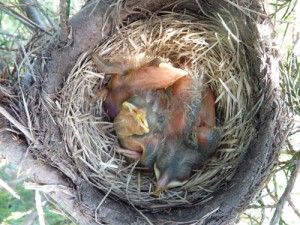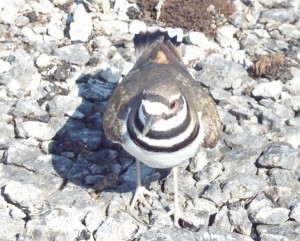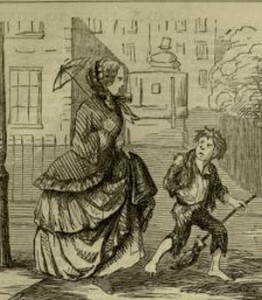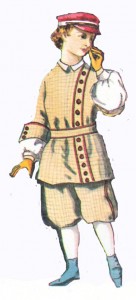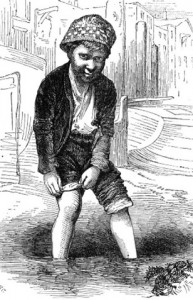They look like they’re flitting at random, snacking on bugs and seeds, pausing to treat us to a song. In reality just about every bird out there this spring is a hard working parent, labouring to feed a nest full of voracious hatchlings. Those swallows darting for insects, those robins watching for earthworms to grab, those screeching blue jays cleaning out the feeder, have three or four young ones at home crying out for more, more more!
Each youngster is trying to get the most and grow the fastest, in many cases so they can push a weaker sibling over the edge and snap up an even bigger share of the family bounty. Baby birds have huge yellow mouths to get mama’s attention and the meal she is carrying. On long summer days, the birds are on the wing from dawn until they drop wearily into the nest at nightfall with their ravenous progeny. The carefree single life in tropical winter quarters, the adventures of migration, the social joy of flocking in the fall are pointless frivolities unless they do their bit to propagate the species. Speed growth, powered by grubs, worms and parental doggedness, gets those nestlings on the wing. So let’s look twice and really appreciate the effort.
Blog
My Chipmunk, the Four Ounce Marvel
For me, spring is signaled by the appearance of my favorite chipmunk scrounging under the bird feeder for fallen bounty. I know her by her shortened tail, no doubt from some close call with a toothy predator. I have never paid much attention to these ubiquitous little rodents. However, I am so amazed that this particular little dynamo has turned up for the third season in a row that I decided to read up on what she has been doing all winter.

Face stuffed, ready to dash to her burrow.
Sleeping, it turns out, in a luxurious burrow up to four yards long with lots of cleverly hidden exits and entrances designed for quick refuge or getaway. While zzzzing out the blizzards, my chipmunk performs the marvel of slowing her heartbeat from 350 per minute down to 4 and dropping her body temperature from 36 to 3 degrees – a brilliant feat of energy conservation. Every two weeks or so, she wakes up for a snack and a visit to the loo, A very tidy housekeeper, she has hollowed separate chambers in her burrow for sleeping, lounging, food storage, refuse and a private toilet.
She certainly needs her rest. While I supposed she was playing about in the sun, she was urgently foraging to raise not one, but two litters of four or five babies per summer. Talk about a working mom! On top of that, she had to fill her food chambers for the winter – which accounts for her obsessive trips to the bird feeder to stuff her cheeks until her little eyes bulge.
She would then undertake a perilous journey over and over, observed from my window. First there was the scramble off the deck down the mock orange bush to the cover of the hostas on the ground. Then the sprint from the hostas across the mown grass to the spirea. A pause, then another dash over exposed space to the cover of the lilac clump. Her reconnoitre was most careful here, for she then had to hightail it across many yards of open lawn exposed to whatever bird or cat might strike from sky or underbush. At the edge of the hill, she disappeared from sight, no doubt to her burrow between the rock layers below. About ten minutes later, the whole thing would take place in reverse as she returned for another load As long as there was bird seed, she kept going.
She not only eats my bird seed, I learned, but will chow down on bugs worms, grass and seed and even small frogs and birds eggs. No wonder birds mob her when she approaches. Another of her jobs is to spread seeds and spores and the eight or ten new chipmunks she has added to the local economy keep the food chain going. Think of all those hungry hawks, foxes, coyotes, weasels and snakes that need their dinner. So hail the little soldier. I’ll put an extra ration in the bird feeder and cheer her on to last another season.
Museum of Obsolete Professions: Crossing Sweepers
Look out for the horse manure, lady!
In a London street crammed with horse-drawn carts, carriages and wagons, the result was horse poop. Heaps of it. Toss in mud and rain and crossing a street in decent boots or long skirts was hazardous indeed. So quick as a wink, armed with broom and speed, a ragged lad or gaunt woman swept clear the way across, hoping for some pennies for their trouble.
The profession of crossing sweeper was the “last chance to obtaining an honest crust.” All you needed was a broom and a likely street crossing to set up. Street urchins, lamed soldiers, workmen crippled by accidents, destitute women, all snapped up the work. Though they scraped the barest of existences, they could ask gratuities without appearing to beg.
Lucky regulars were under the protection of the police who helped fend off challengers to a busy crossing. Sometimes, the sweepers even grew familiar enough to the neighbourhood to earn a small, regular sum for their services. Their main expense was brooms which lasted about two weeks in dry weather and a week in wet. The worse the weather, the better the sweeper fared, though it certainly didn’t do much for their health.
Young sweepers clubbed together to defend their territory and share the take. Sometimes they made enough to buy a piece of cheap meat and boil it up, drawing lots for the biggest bit and doling out the broth in cupfuls until gone. Agile youngsters could sometimes supplement their meagre income by tumbling in the streets at night for the amusement of Opera goers or chasing after buses to grab for tossed coins.
Skinning, A Victorian Crime
Hold tight to your waistcoat, young Harry
Skinning was the crime of enticing or abducting a youngster away in order to strip it of its clothes. This crime of desperation was a lot more frequent in the winter, with the need for warm garments, than in summer. A stout wool coat or real shoes must have been a powerful temptation to the parents of shivering little ones with only some rags to their name.
Women were better at luring small, well-dressed children to some isolated corner where they could be stripped of boots and coat and other clothes. Elderly women found themselves suited to the crime. The child was often terrorized into silence while the thief made off with the booty.
Professional “skinners” could strike with lightning swiftness, leaving a child frozen with fright and practically naked while its mother or nurse, too slow to miss the child, frantically searched. The purloined clothes were turned over for a profit on the street or taken to the pawn shop for a good handful of coin. When practitioners were caught, there was sometimes a troop of children and their outraged parents at the trial, indignantly pointing out the guilty party.
Museum of Obsolete Professions: Mud Lark
Or a very tough way to earn a pittance
In London, England, mud larks were the poor desperate enough to scrape a living scavenging off the mud of the Thames for anything of value. Low tide exposed banks studded with whatever the day’s water had carried in or the dense river traffic had dropped. By the 18th and 19th centuries, an existence could be scratched from collecting bits of coal to be sold to the neighbours, rag and bone for the rag and bone shop or bits of rope to sold wet or dry. A great find would be a hammer or a saw or some copper nails from the boats that lay in the mud.
Kids between 8 and 15 were most frequent, mostly male, but some females took to it, as well as some driven to it in their old age. Henry Mayhew, that chronicler of London’s, poor says many old women could be seen among them, bent nearly double with age and infirmity, especially pitiable in the winter, scouring the mud for some means to keep themselves alive. When they had managed to fill an old basket or kettle with refuse from the tide, it was all they could do to carry it home.
Conditions were filthy. Raw sewage washed through as well as corpses of dead animals and, all too frequently, those of human victims of suicide, crime, or misadventure. The Thames was also a ready receptacle for unwanted babies. Mud larks cut their feet on broken glass, nails and other refuse, suffering the resulting infection and disease. They wore unspeakable rags that only half covered them. Those that got themselves arrested, discovered that prison, with food and something to wear, was a surprisingly comfortable holiday.
By the end of the 19th century, mud larking was no longer acceptable. No one regretted the disappearance of the occupation.
The Average Canadian Spends $549 Per Year On Lotteries!
Multiply that by the population of the country and you will be boggled! That’s $549 per person that is not going to local bakers and plumbers and playground drives. No wonder the government is higher than a drunken turkey vulture on our cash. How about yanking us back to the days when even an Irish Sweeps ticket was a wild forbiddenl risk.
Next Novel In The Works!
If you liked The Tomorrow Country, you’ll be pleased to know I’m making progress on the next novel in the series. Katie, Cully, Laura and Will, the Home children from England, have been shipped to Canada and scattered about rural Ontario. How are they taking to such a strange new life? With difficulty!
Late Blooming Optimist?
 My mock orange bush blooms profusely in June, it’s appointed time. So what would possess the bush to suddenly produce a couple of blooms again in late October just in time to flirt with frost? Is the bush a misquided optimist, utterly confused or is it bravely defying the dying of the light. Too bad it can’t talk.
My mock orange bush blooms profusely in June, it’s appointed time. So what would possess the bush to suddenly produce a couple of blooms again in late October just in time to flirt with frost? Is the bush a misquided optimist, utterly confused or is it bravely defying the dying of the light. Too bad it can’t talk.
The Joy of Hooping

Night hooping with lighted hoop
Did you know the hula hoop is back? It was news to me but I have discovered there are hooping groups, hooping classes and free-for-all hooping jams in the parks. For those of you who haven’t hooped since grade four, the key is an adult hoop of the proper weight and taped so as not to slip. Oh, and they come with lights so you can really throw a surprise at passersby in the dark.
In 1815, They Had 222 Reasons to Hang You.
That’s how many offences carried the death penalty in the British penal code. That the number had risen from the mere 50 death penalty charges in the brutal “Bloody Code” of 1660 showed how much fear of crime had also increased in the intervening years.
And there did appear to be an ever increasing crime wave. With the vast movement of people from countryside to town for uncertain work in factories, desperate poverty shot up – and so did crime, from 5000 offenses a year in 1800 to 20,000 a year by 1840. Victorians obsessed about this rising criminal threat and tried to stamp it out with a sledge hammer. So, besides arson, treason, piracy and murder, you could be done in for sheep stealing, consorting with gypsies, writing a threatening letter, stealing a letter, cutting down a tree, damaging Westminster Bridge, nicking a rabbit for dinner, begging without a license, impersonating a Chelsea Pensioner or being a particularly malicious child aged 7-14.. Oh, and if you were caught skulking about with a blackened face, that meant you were up to no good and best hang you for that too.
Slowly, a more enlightened attitude crept in and, by the end of the 19th century, this vast number of hanging offences was enormously reduced. Hanging dead criminals in chains for months as a ghrisly warning was abolished in 1834, public executions in 1868, beheading and quartering executed traitors was stopped in 1870. Beheading as an execution method was finally abandoned in 1971.
Today, in Britain, there is no death penalty. The last working gallows, tested faithfully ever six months until 1992, has been consigned to a museum of crime and punishment. To the applause, no doubt, of thousands of ghosts with stretched necks or heads tucked underneath their arms.
